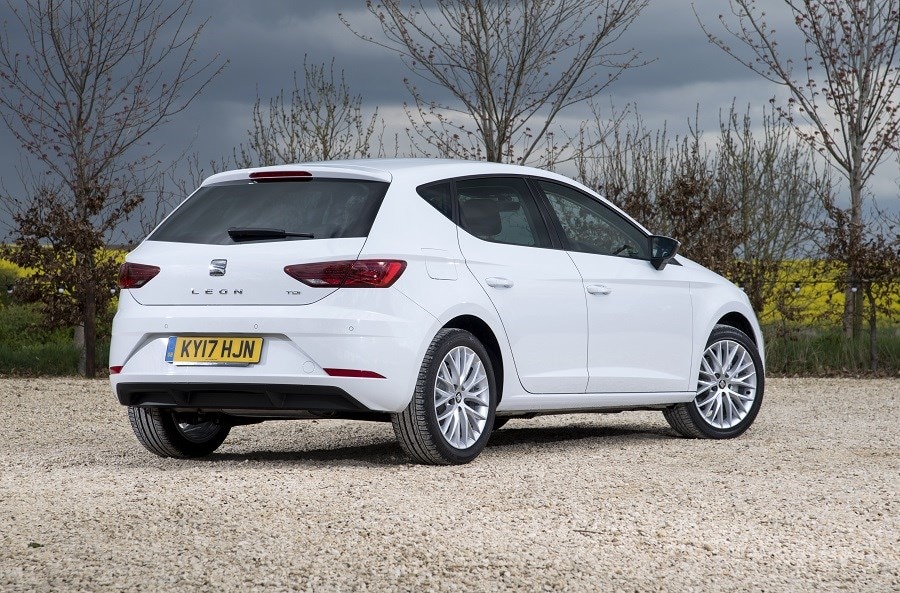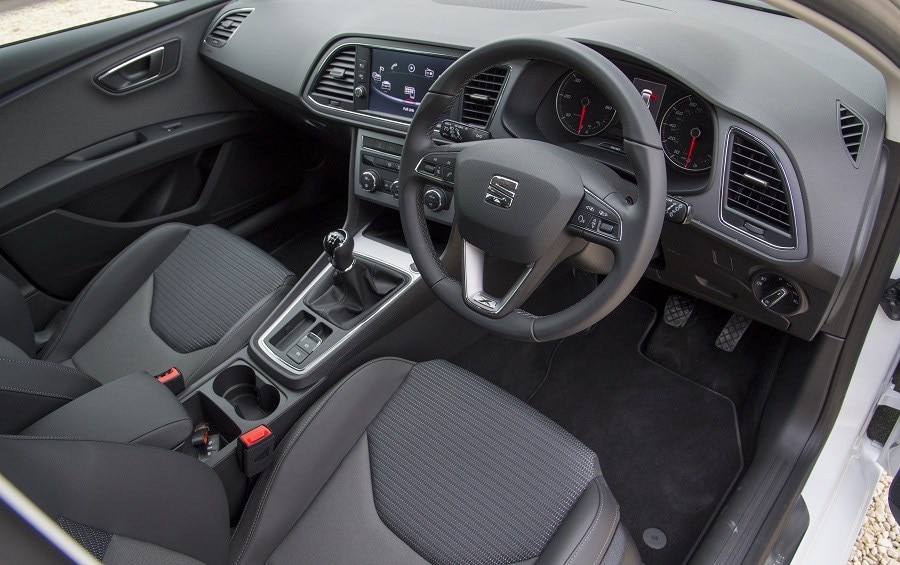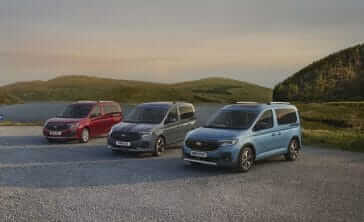Model Review
The Leon was one of Seat’s first models to be born out of the firm’s partnership with Volkswagen, with the model essentially being a fourth-generation Golf beneath the bodywork.
It was Seat’s first model to compete in this class, and as is now traditional with the Spanish brand’s products, it was designed to be a sportier alternative. This was evident in its sharp styling, which has aged remarkably well for a car unveiled in 1998.
Seat quickly developed this sporty image with the launch of ‘Cupra’ hot hatch models, with the Cupra R version gaining a particularly strong reputation at the time.
A second-generation model reached showrooms in 2005, and the third-generation model went on sale in 2013. This, the latest model, is built on the Volkswagen MQB platform, which allows the model to shed some pounds and offer a roomier cabin. An estate model – called the ‘ST’ launched simultaneously with the hatchback.
Latest model
We’re still in the third-generation of the Leon, but Seat gave its popular hatchback a comprehensive update in 2016; sales of this revised version kicked off in February 2017.
Styling updates were subtle, with the revised version benefitting from sharper lines, a new front bumper, a larger grille and full LED lights on high-spec versions. A top-spec ‘Xcellence’ trim level was also added, with this grade coming with ambient interior lighting, further chrome to the front grille and keyless entry and start.
But perhaps the greatest alteration made was to the safety kit offered. In keeping with the trend of autonomous driver aids being fitted to new cars, the Leon received adaptive cruise control, blind spot monitoring and autonomous emergency braking, to name but a few features of this ilk.
On the sporty side of things, Seat launched two new limited-edition Cupra models. The first of these was the 306bhp Cupra R, of which just 24 were brought over to the UK—making it an elusive model over here. The second was the Leon ST Cupra Carbon Edition, an estate version trimmed in various bits of carbon. Just 50 of these were released to UK buyers.
Value for money
The Leon is a well-priced offering in the family-sized hatchback class. Prices start from £18,260 for an entry-level ‘SE’ spec Leon, although it comes with plenty of kit for that price. Standard equipment includes 16-inch alloy wheels, cruise control, LED daytime running lights and an eight-inch touchscreen with Apple CarPlay, Android Auto and DAB radio. All specs gain a good of equipment, although top-spec Xcellence and Xcellence Lux versions are a bit expensive for what they are.
Because of the Leon’s popularity, there’s no shortage of them for sale on the used market. Early examples start from as little as £500, but what we’re interested in here is the latest third-generation version. As the Leon is a popular choice with fleet companies, there’s plenty of well-used examples on the market, which start from as little as £4,000 for a 2014 diesel model with over 100,000 miles on the clock. Expect to pay around £6,000 for a Leon with a more respectable 60,000 miles in SE trim.
Nearly-new examples are tempting, with significant savings available off list price. Under £12,000 will net you a Leon in SE Technology trim that’s under a year old.
Looks and image
Despite the Leon being quite an outdated model compared to newer competition, it manages to hold its place as a desirable family hatch. Its well-proportioned design, sleek chrome grille and LED headlights from FR models upwards give the car a stylish look on the road. The FR and Cupra models are the most visually stimulating courtesy of their sporty styling.
The interior isn’t quite so bold, and despite a refresh in 2017, it’s starting to show its age. It looks quite dull and the dark colouring to it doesn’t help, while the eight-inch touchscreen lacks the features that you might find on newer cars such as the Volkswagen Golf and Kia Ceed.
But looks don’t count for everything, particularly as the Leon’s dashboard and touchscreen are all very simple to use. Everything is easy to read and operate, while the cabin’s de-cluttering of buttons also improves the interior. It’s also largely well-built, with plenty of soft plastics and lashings of leather here and there.
The family hatchback class is a competitive sector when it comes to the way cars drive, and the Leon can still hold its own. It might not be as involving nor as exciting to be behind the wheel of, but it handles neatly with limited body roll and also has well-weighted steering, which makes the car easy to place. This driving involvement comes at the expense of ride quality, which is firmer than what you would find in a Volkswagen Golf or Skoda Octavia. It doesn’t crash over bumps, but it could be a fraction softer for the sake of optimal comfort.
Space and practicality
The Leon might not be the largest car in its class, but there’s still plenty of interior and boot space for family duties.
There’s a vast improvement over the past Leon’s cabin space, with four adults now being able to sit in comfort, with plenty of legroom and headroom at their collective disposal; with that said, carrying five adults would likely be a push.
As for boot space, there is 380 litres to play with. It’s quite average for its class, offering slightly more space than the Ford Focus, the same amount as the Volkswagen Golf, but noticeably less than the Skoda Octavia, which is the best option in this class if boot space is a deciding factor. However, it does have a high boot lip, which can make loading heavy objects a bit tricky.
It’s worth noting that the Leon used to be offered as a three-door variant (called the SC) until the end of 2018, while you can also have it in a more practical estate car variant. The estate (known as the ST) keeps the same cabin and rear seat space, but with a much larger 587-litre load bay.
The Leon should also prove to be a safe car as well, with the Seat recording a five-star Euro NCAP rating when it was tested in 2012. Particularly high scores were recorded in the adult and child occupant categories.
The facelifted Leon is even safer because of its standard-fit autonomous emergency braking.
SE Dynamic versions add front and rear parking sensors to help prevent those low-speed bumps. Meanwhile, top-spec Xcellence Lux versions come with an impressive array of safety aids including a tiredness recognition system, a seat belt reminder for the rear seats, adaptive cruise control and lane-keep assist.
Engines
Seat offers an excellent range of engines in the Leon, with both petrol and diesel catered for.
On the petrol side of things, there are four options. The first is a 113bhp 1.0-litre turbocharged engine capable of shifting the Leon from 0-60mph in a time of 9.6 seconds. There’s also a new turbocharged 1.5-litre ‘Evo’ engine, which can be had with either 128bhp or 148bhp. The latter manages the 0-60mph sprint in eight seconds, and is offered with a seven-speed DSG automatic transmission, alongside the standard six-speed manual ‘box. At the top of the tree is a 187bhp 2.0-litre turbocharged petrol unit, which offers a 0-60mph time of 7.0 seconds and a top speed of 142mph.
The diesel options are slightly more limited; the range consists of a 113bhp 1.6-litre engine, or a 148bhp 2.0-litre unit. The 1.6-litre comes as standard with a five-speed manual transmission, or a seven-speed automatic, while the 2.0-litre engine makes do with a six-speed manual. You used to be able to get the latter option with a more powerful 181bhp output, but it’s no longer available on new models. All diesel engines manage a good balance between efficiency and performance.
We haven’t mentioned the Cupra much in this review, but that’s because it’s a different breed to the standard Leon. The hot hatch utilises a 296bhp 2.0-litre petrol engine paired to a seven-speed DSG automatic transmission, and is capable of going from 0-60mph in 5.8 seconds, and onwards to a top speed of 155mph.
Running costs
There’s quite a difference in terms of efficiency between the petrol and diesel engines in the Leon. The cleanest engine is the 1.6-litre diesel unit, which manages 57.6mpg on the combined cycle and CO2 emissions between 106 and 111g/km. The Cupra is unsurprisingly the least efficient—returning just 38.7mpg and CO2 figures of 149g/km.
The engines between the two extremes typically balance performance and running costs quite well.
Insurance groups are quite average for a car in this class, with groupings ranging from 13 for the 1.0-litre petrol and 1.6-litre diesel, to 26 for the Cupra; the latter model is actually surprisingly cheap to insure when you consider the performance and thrills on offer.
Things to look for
With much of the Leon’s underpinnings and engines being shared with models across the Volkswagen Group, there shouldn’t be a great deal to worry about. The only things worth considering are known reliability issues with the now-superseded 1.2 and 1.4-litre petrol engines, which are still prominent on the used market. The DSG automatic gearbox has been known to cause some issues, too.
Rivals
In the family hatchback class, the Leon has no shortage of credible rivals. Unsurprisingly, it’s Seat’s sibling models from the VW Group that are its closest rivals—the Volkswagen Golf and Skoda Octavia. However, other credible cars in the sector include the Ford Focus, Peugeot 308, Renault Megane, Hyundai i30, Kia Ceed and Vauxhall Astra.
Depreciation
Seat doesn’t have the same brand image as Volkswagen does with its Golf, which means that the Leon doesn’t hold its value particularly well. It’s not helped by the model being a popular fleet car, which means that supply can often outweigh demand in the used market. However, use this to your advantage—particularly when nearly-new examples are offered with huge discounts compared to their list price.





